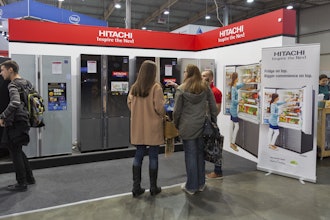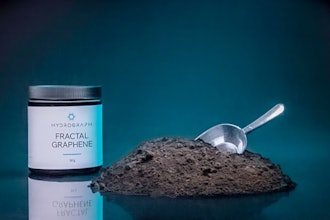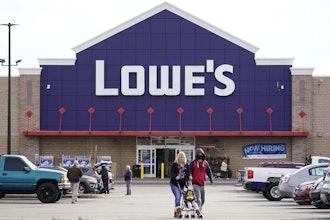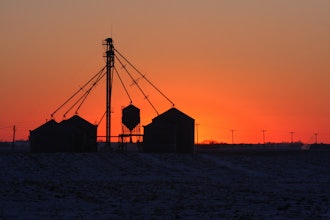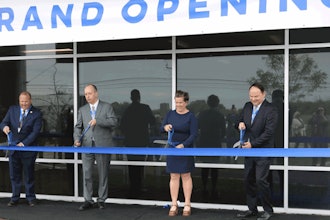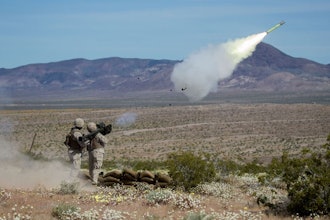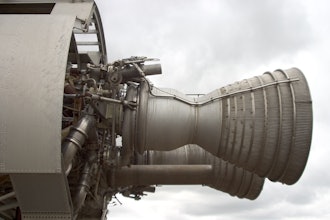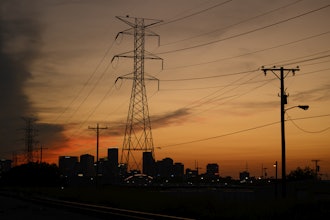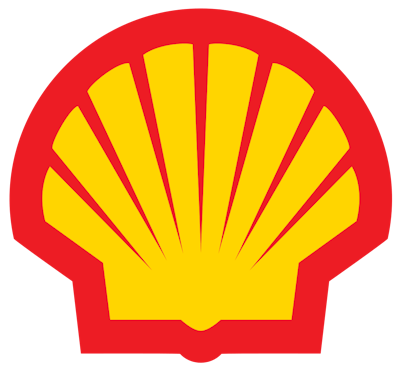
Royal Dutch Shell and Qatar Petroleum’s (QP) joint announcement last week that they have cancelled their planned $6.5 billion Qatari petrochemical project, called Al-Karaana, which will significantly change the global supply and demand balances for mono-ethylene glycol (MEG), a key chemical component essential for the manufacture of polyester fibers, fabrics, anti-freeze agents, and polyethylene terephthalate (PET) resins used in bottling, according to analysis from IHS Chemical.
Shell and QP cancelled Al-Karaana, which was to include a world-scale steam cracker with feedstocks coming from natural gas projects in Qatar, citing high capital costs (received in EPC proposals) and the current economic climate in the energy industry, which rendered the project “commercially unfeasible.” According to IHS ChemicalWeek, the Al-Karaana project was initiated with a heads of agreement between QP and Shell in December 2011 and envisioned the construction of a world-scale petrochemicals complex at Ras Laffan, Qatar, by 2018. The complex was to be operated as a stand-alone joint venture between the two companies, with the Qatari company owning 80 percent and Shell 20 percent.
Escalating capital costs too much for these oil and gas players to absorb
Both QP and Shell are heavily exposed to oil and gas markets — the majority of their revenues are linked to oil and gas production, which weighed significantly on the decision to cancel Al-Karaana. The willingness to commit to a project that would have cost well in excess of the expected $6.5 billion for these companies was clearly not viable in today’s tighter global capital markets. However, despite expectations for an oil price recovery by the time this project would be operational, the strain that several billion dollars of additional debt would have placed on the reduced revenue flows for these companies could not be ignored.
High capital costs not an issue for all producers in the Middle East, but collapse in polymer market prices is
The weakening earnings for cost-advantaged producers in the Middle East will place significant strain on profitability for major chemical producers in the region. The exposure that fixed-cost, or low-cost ethane-based operators have to changes in polymer and other derivative markets is large. The reduction seen in Asian and European market prices, which have yet to fully absorb the impacts of the current energy market, will directly lower earnings for Middle East producers, with only those exposed to market-related feedstock pricing seeing any similar impact on costs. From an operational perspective, this is far from critical — these Middle East units are still the lowest–cost producers on a global basis — but companies who have been used to $1000/ton margins may struggle when those margins are only $300 per ton to $400 per ton.
Besides the Al-Karaana project, we anticipate similar cost pressures for other early-stage projects in the region. However, the capital concerns that have hit Al-Karanna are not impacting those projects in start-up or close to start-up phase, such as Borouge 3 in Ruwais, United Arab Emirates or the Sadara joint venture between Saudi Aramco and Dow.
The exposure to lower market prices cannot be avoided, however, and leadership of both assets will be hoping for a swift recovering in oil markets, and therefore, in polymer and other chemical prices. The situation for U.S. producers is not dissimilar to that being experienced by their Middle East counterparts— a low-cost industry faced with severe margin contraction. The recent downgrades in earnings outlooks by investment analysts who cover the U.S. chemical companies are a clear reflection of this pressure.
However, the global olefins industry is still far from experiencing a role reversal. U.S. and Middle Eastern olefins producers may have to get used to lower margins for some time, but there will be no shortage of outlets for their products, and their costs mean they will keep on producing.
A weakening outlook for MEG markets also a consideration
The Al-Karaana olefins complex was to be designed to produce 1.1 million metric tons (MMT) per year of ethylene and 170,000 MMT per year of propylene. Downstream units had been expected to include a 1.5 MMT per year ethylene glycol plant; a 300,000 metric ton per year linear alpha-olefins unit; and a 250,000 metric ton per year oxo-alcohols plant.
The Al-Karaana project included two MEG units, with total capacity for 1.5 MMT of production, due on-stream in 2018. The project cancellation significantly changes the MEG global supply-demand balances for the period 2018 to 2025. Prior to the cancellation, it appeared that the combination of the Qatari JV, along with several new, low-cost EO-MEG units in North America (based on ethylene from shale ethane), and rapid build-up of coal-to-MEG (CTM) capacity in China, had the potential to create a very large over-supply of MEG relative to demand, leading to lower prices. While this potential over-supply and resulting sell-price issue was not mentioned explicitly in the cancellation announcement, an anticipation of lower margins for MEG was almost certainly a contributor to the company’s conclusion that the project was “commercially unfeasible.”
In North America, the EO-MEG investment picture is still not clear. One company, Sasol, has approved a project that would build 300 thousand metric tons per year of new EO capacity, and that would include new MEG production that IHS Chemical estimates at 300 thousand tons per year. Lotte Chemical and MEGlobal both announced in 2014 that they planned front-end engineering & design (FEED) studies for world-scale MEG units on the U.S. Gulf Coast. Indorama Ventures (Bangkok) recently stated that it is “exploring the possibility of putting up another MEG plant and participating in a cracker project in the U.S.”
Market rumors have identified Formosa Plastics Company (Taiwan) as another potential investor in MEG, though that company has not made any public statements on the matter. On the other hand, INEOS Oxide (U.K.) shelved their plans for a new, U.S. Gulf Coast world-scale MEG project that was originally announced in 2011, citing concerns over high capital costs, similar to Shell’s recent announcement.
Considering all the available information, IHS has projected in its IHS Chemical 2015 World Analysis - Ethylene Oxide/Ethylene Glycol report that there will be at least three new, world-scale EO-MEG units built in the U.S. by 2019. Three U.S. units, plus CTM capacity from China, along with other miscellaneous investments, and the previously assumed Al-Karaana project, would have added approximately 12 MMT of MEG capacity by 2020, while MEG demand is expected to grow by only 8 million tons to 9 million tons in the same timeframe. The 2018 to 2019 Qatari capacity addition was the probable “trigger” for a multi-year MEG margin “trough.”
The net result would have been a sharp reduction in the MEG global industry capacity utilization (dropping to about 80 percent) and, historically, such a low rate has correlated with very poor margins for MEG producers, especially those based on naphtha. The removal of the Shell-Qatari project from the mix would bring global MEG supply nearer to balance with the projected 2020 demand, and result in a more reasonable industry operating rate closer to 84 percent or 85 percent.
The conclusion of our IHS analysis is that the Al-Karaana project, viewed on its own, would have been profitable, since it was based on low-cost light feedstocks. With that in mind, neither Qatar Petroleum nor Shell would have likely cancelled a project of this scale based solely on a projected margin trough of a few years. However, Shell is the number two global producer of both EO and MEG, and also enjoys a leading position as a vendor of technology licenses in the business. As a result, Shell leadership was compelled to consider the impact on their overall global business, and they would have keenly felt the impact of a multi-year margin “trough” caused by over-supply.
The project cancellation offers a more optimistic profit environment for the EO-MEG industry as a whole, and we suggest that weighing the global impact of the Al-Karaana project on their business was a significant component in Shell’s conclusion that this project — at this particular time was, indeed, “commercially unfeasible.”










